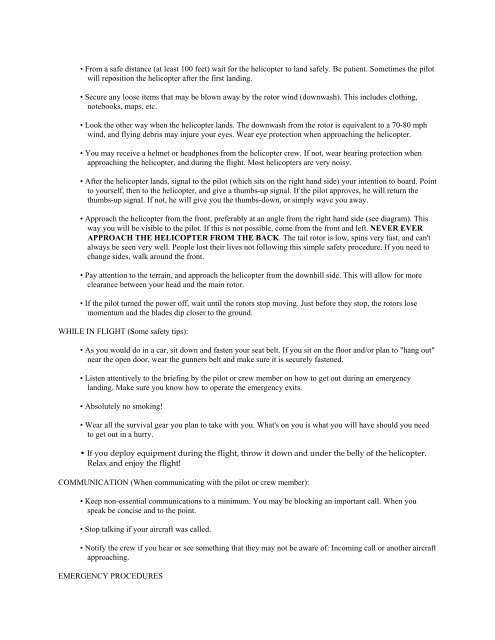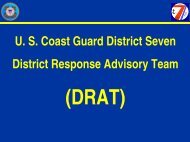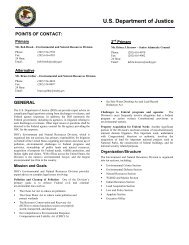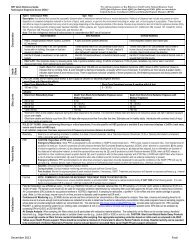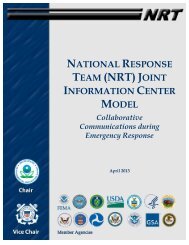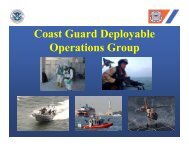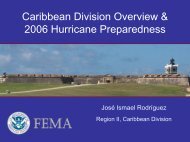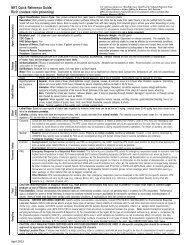USE OF DISPERSANTS - U.S. National Response Team (NRT)
USE OF DISPERSANTS - U.S. National Response Team (NRT)
USE OF DISPERSANTS - U.S. National Response Team (NRT)
- No tags were found...
Create successful ePaper yourself
Turn your PDF publications into a flip-book with our unique Google optimized e-Paper software.
• From a safe distance (at least 100 feet) wait for the helicopter to land safely. Be patient. Sometimes the pilotwill reposition the helicopter after the first landing.• Secure any loose items that may be blown away by the rotor wind (downwash). This includes clothing,notebooks, maps, etc.• Look the other way when the helicopter lands. The downwash from the rotor is equivalent to a 70-80 mphwind, and flying debris may injure your eyes. Wear eye protection when approaching the helicopter.• You may receive a helmet or headphones from the helicopter crew. If not, wear hearing protection whenapproaching the helicopter, and during the flight. Most helicopters are very noisy.• After the helicopter lands, signal to the pilot (which sits on the right hand side) your intention to board. Pointto yourself, then to the helicopter, and give a thumbs-up signal. If the pilot approves, he will return thethumbs-up signal. If not, he will give you the thumbs-down, or simply wave you away.• Approach the helicopter from the front, preferably at an angle from the right hand side (see diagram). Thisway you will be visible to the pilot. If this is not possible, come from the front and left. NEVER EVERAPPROACH THE HELICOPTER FROM THE BACK. The tail rotor is low, spins very fast, and can'talways be seen very well. People lost their lives not following this simple safety procedure. If you need tochange sides, walk around the front.• Pay attention to the terrain, and approach the helicopter from the downhill side. This will allow for moreclearance between your head and the main rotor.• If the pilot turned the power off, wait until the rotors stop moving. Just before they stop, the rotors losemomentum and the blades dip closer to the ground.WHILE IN FLIGHT (Some safety tips):• As you would do in a car, sit down and fasten your seat belt. If you sit on the floor and/or plan to "hang out"near the open door, wear the gunners belt and make sure it is securely fastened.• Listen attentively to the briefing by the pilot or crew member on how to get out during an emergencylanding. Make sure you know how to operate the emergency exits.• Absolutely no smoking!• Wear all the survival gear you plan to take with you. What's on you is what you will have should you needto get out in a hurry.• If you deploy equipment during the flight, throw it down and under the belly of the helicopter.Relax and enjoy the flight!COMMUNICATION (When communicating with the pilot or crew member):• Keep non-essential communications to a minimum. You may be blocking an important call. When youspeak be concise and to the point.• Stop talking if your aircraft was called.• Notify the crew if you hear or see something that they may not be aware of: Incoming call or another aircraftapproaching.EMERGENCY PROCEDURES


